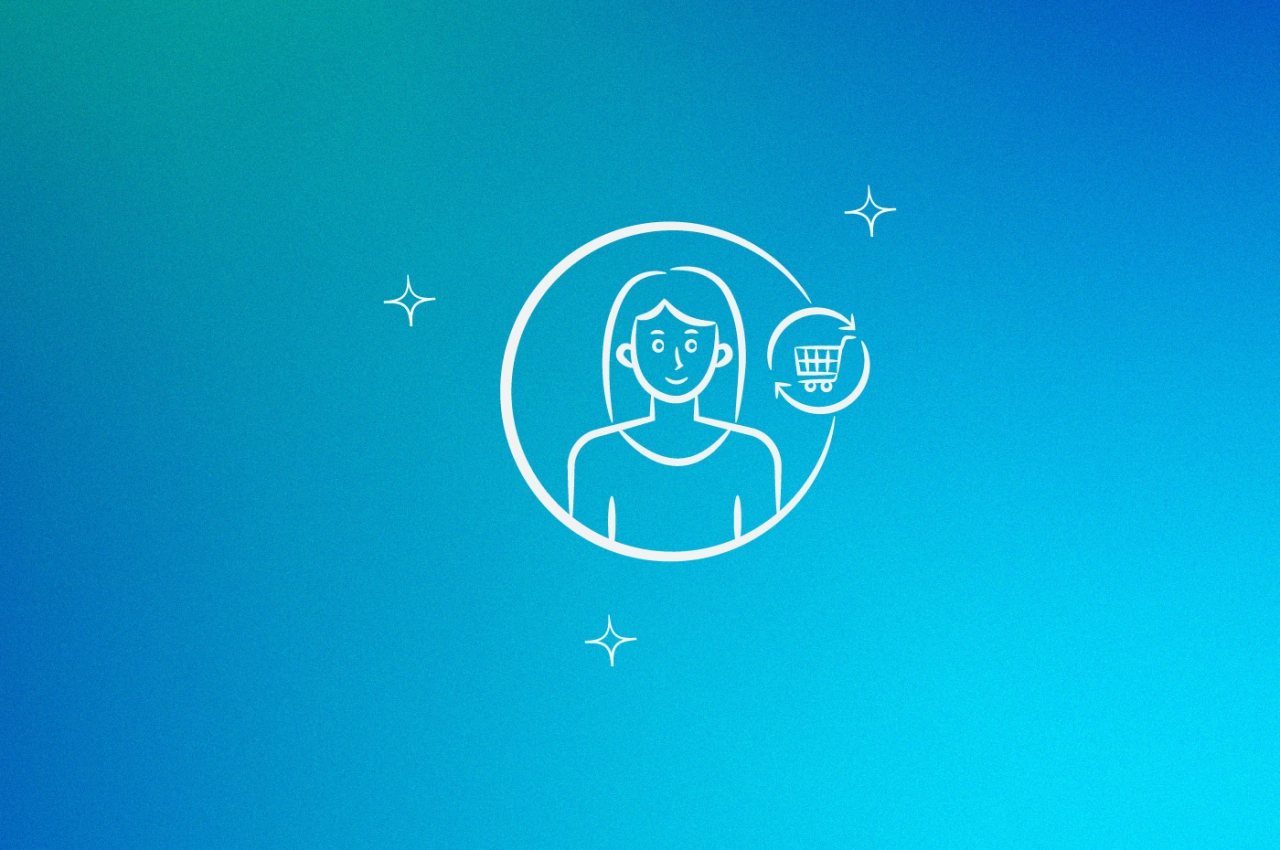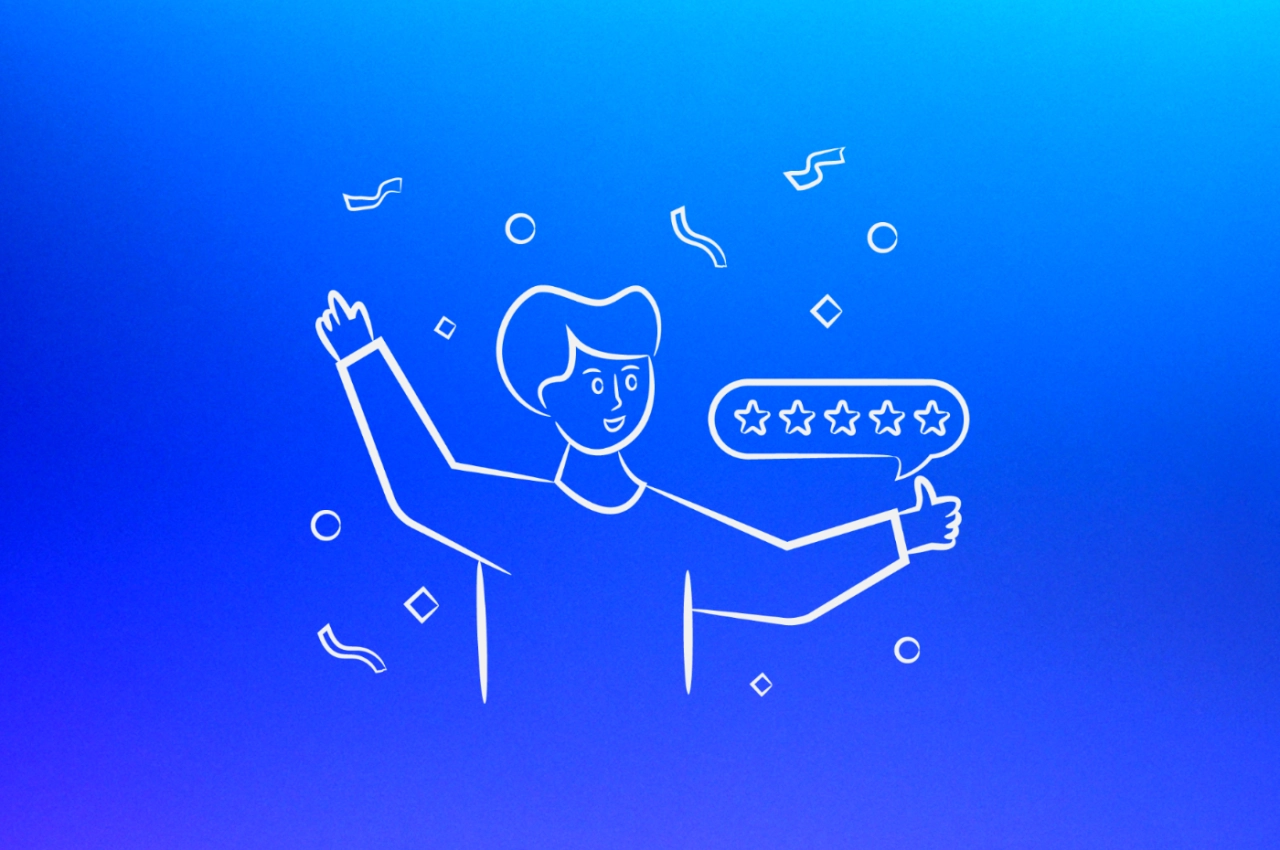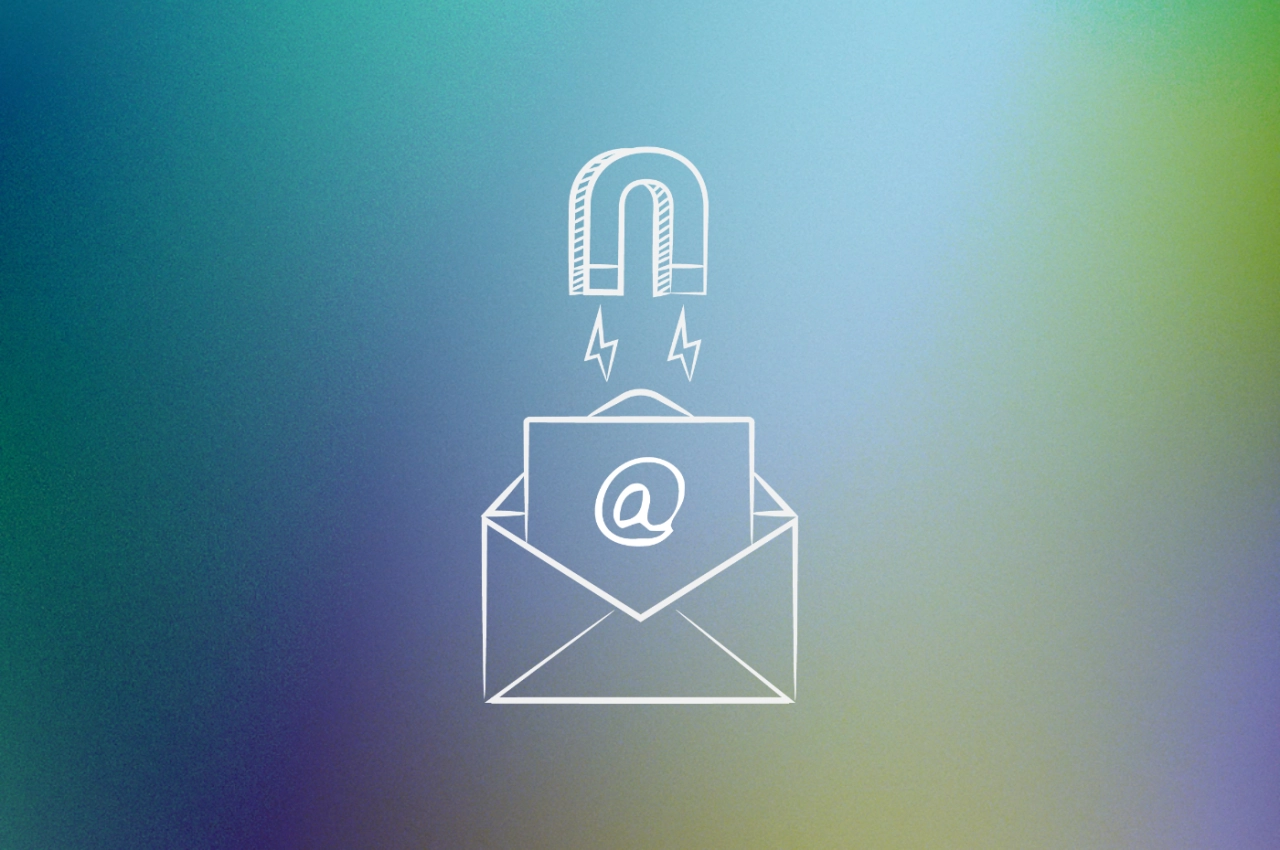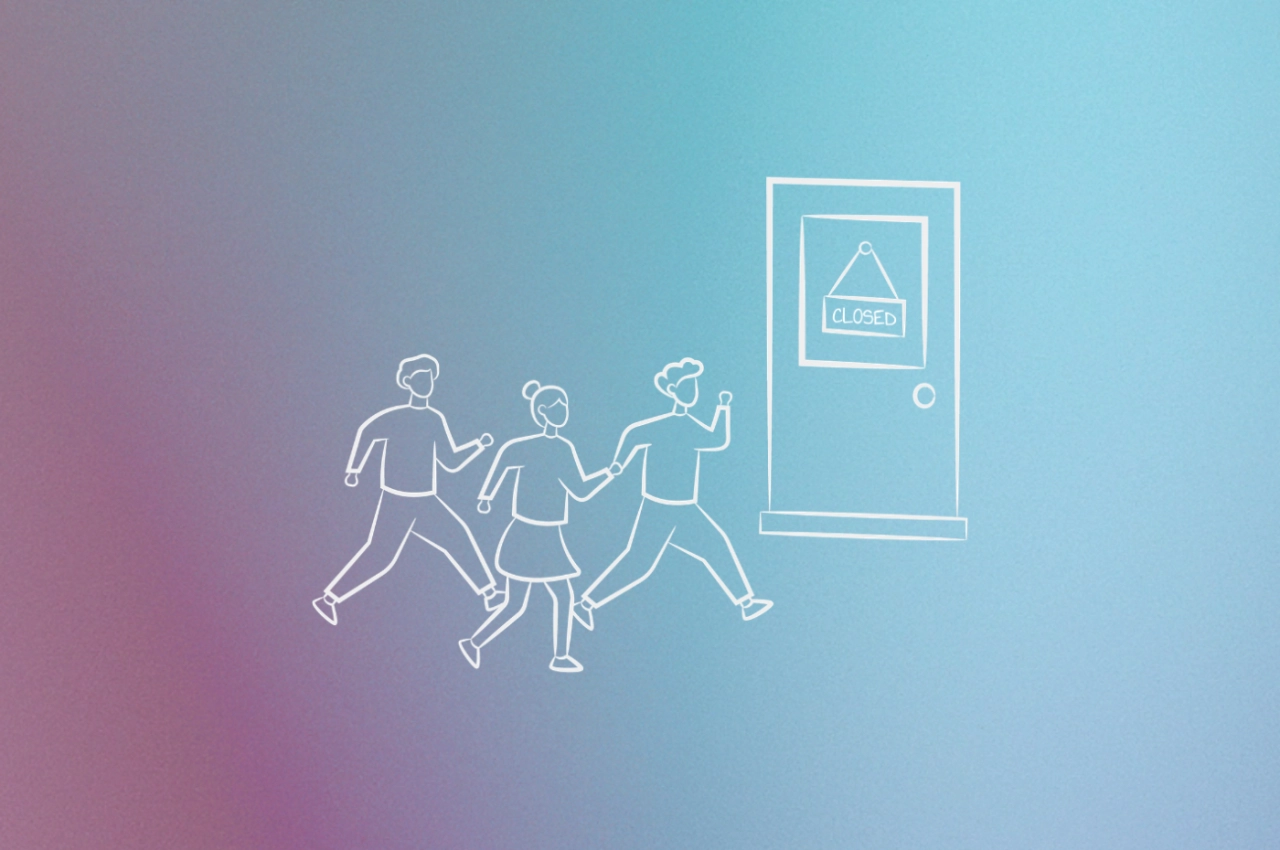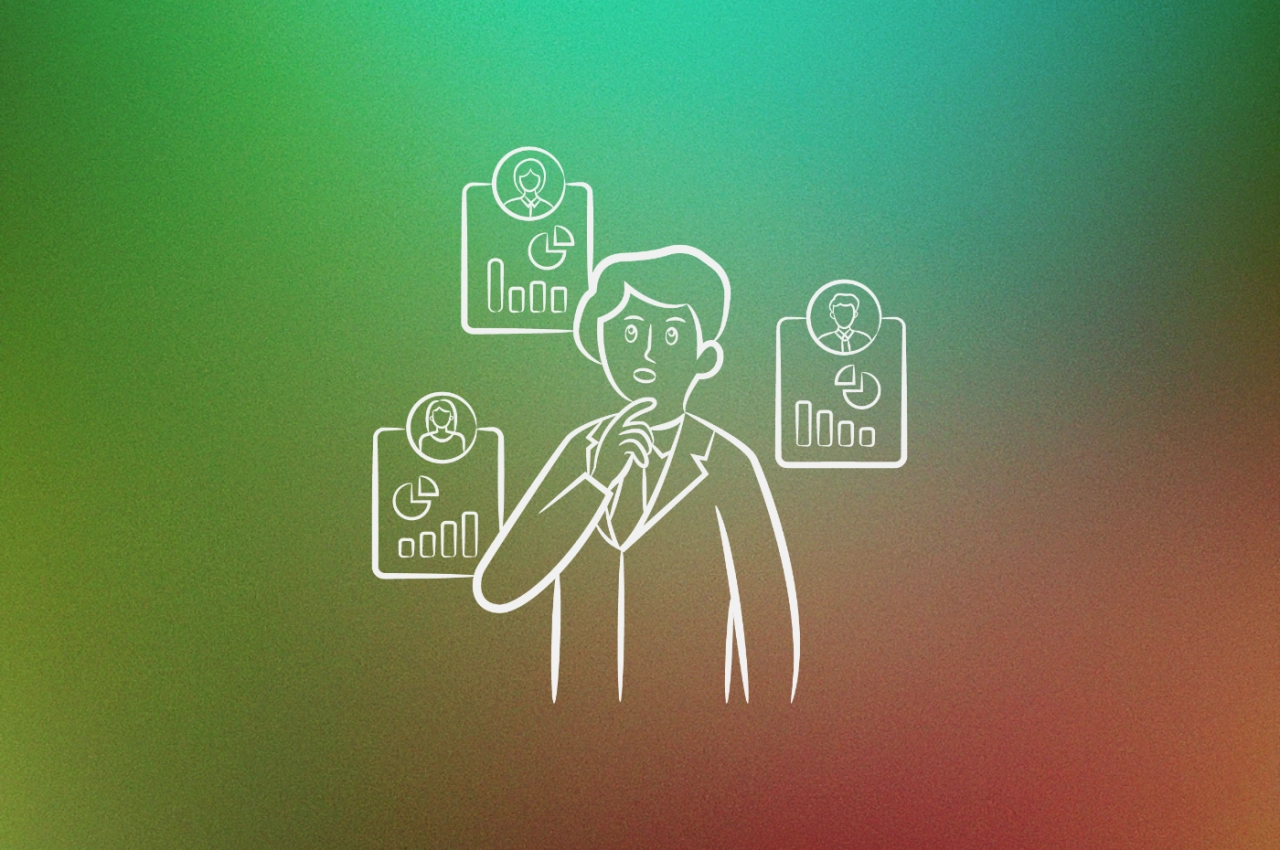- By looking at available data, you can prevent customers from canceling a subscription, therefore reducing churn.
- Focus your retention strategy on making customers feel special, for instance through discounts and promotions.
- Diversify by partnering up with companies that have services you cannot offer, and resell them to your clients.
Account retention is one of the most important pillars of any company, but it’s especially true for a subscription business. Its success is directly linked with the customer experience. If it’s bad, the company has to deal with a high churn rate, and cannot sustain itself.
The solution is simple: keep customers from leaving. Easier said than done, after all, how can you make sure that the investment you made into customer acquisition pays off?
One problem is that customers are overwhelmed with subscriptions these days. From Netflix to ordering content for their blog, consumers spend around $219 per month on various subscriptions. And they estimate that they spend 2.5 times less, according to the survey Subscription Service Statistics and Costs (2022) conducted by C+R Research. Those who do realize that their spending is out of hand start canceling their subscriptions, and you might be one of the affected businesses that end up with a churning customer.
If you don’t want to see your retention rate tank and watch your customer churn going up, you need to work on a variety of things to make sure you attract and keep loyal customers.
In this post, I’ll introduce you to a few subscription retention strategies that allow your service business to retain subscribers for years to come.
Prevent cancelations
In our post about customer retention strategies for small business, I have talked about the importance of self-service. For a subscription service, customer self-service has to be done just right. Some service providers allow their clients to cancel a subscription easily. While that does reduce the amount of work your team has to do, it also increases subscriber churn.
Ideally, the cancelation should be linked to your customer success management software, so your team can try to find out why the cancelation is being considered, and attempt to retain the client. This could be through a promotion, a discount, or other subscriber retention strategies.
Even if you’re unsuccessful in keeping a client, you can learn through customer feedback why they canceled, and use that to improve your subscription business model.
One more task your success team should have is to identify subscribers that are close to churning. If you’re using SPP as your client portal, you have a variety of data points at hand that could help:
past due subscriptions that are not being paid
clients who have not logged into the portal
customers who don’t reply to orders or tickets
You can also push the data from your client portal to a CRM of your choice, and get a better idea of how your client base is doing in order to retain customers more effectively.
Reduce involuntary churn
Payment errors lead to so-called involuntary churn. It’s not that clients don’t want to pay the invoice, but they don’t notice that their subscription payments are failing, or they’re having trouble resolving this issue on their own.
In some countries, two-factor authentication might be necessary to confirm the payment, in others, banks sometimes refuse payments in error thinking they are fraudulent. If you’re using Stripe as a payment processor, you can check up on the exact failed payment error. Sometimes, it’s “do not honor”, which requires clients to reach out to their bank and allow payments to you.
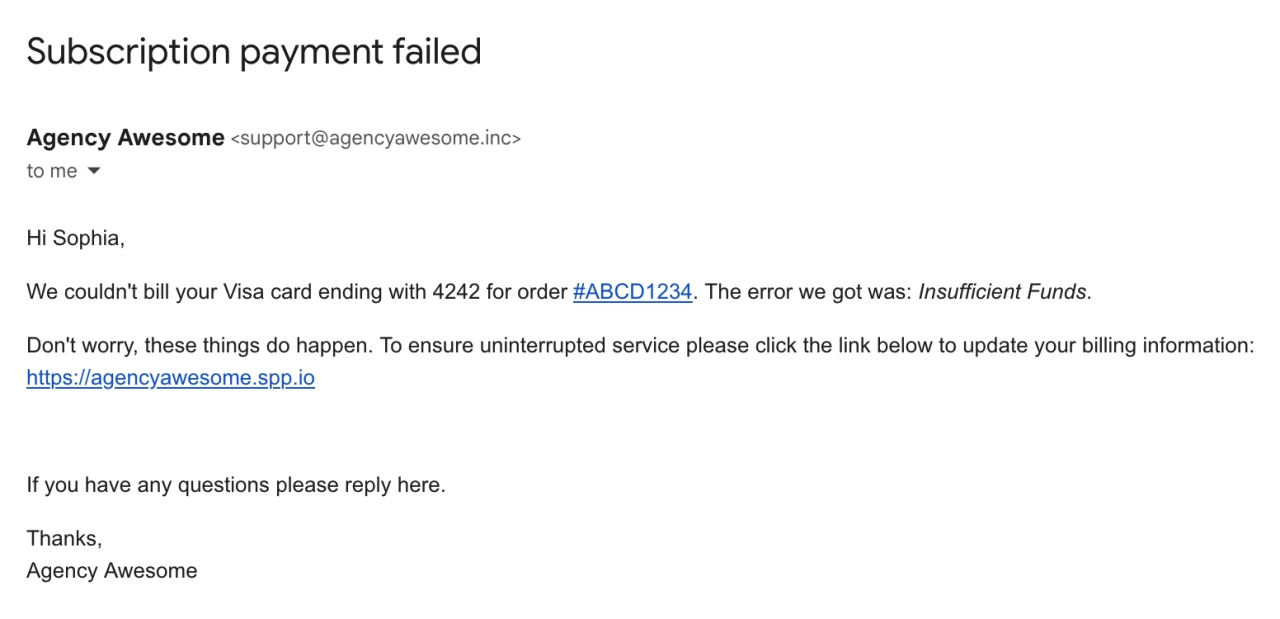
In SPP, we send automated emails to help them take care of unpaid invoices without you having to chase them. But payments might still fail for a variety of reasons, so your team should reach out manually before the subscription gets canceled.
In order to make things more efficient, create message templates that educate customers about common payment issues. Your customer support team can easily send these pre-written messages and save time.
Offer discounts
You want to improve your customer loyalty? Why not offer discounts, especially to those who might churn soon. You can either offer a customer loyalty program, or find those at risk of canceling their subscription, and offer an incentive to stay..
The benefit of having a loyalty program is that it increases customer satisfaction. They don’t get a discount because they are leaving, instead, they are rewarded for staying a loyal customer.
Focusing on customer retention rewards you with an important thing: you’ll be able to extend the customer lifetime value—which is an important metric to keep track of. After all, finding new subscribers and converting those into paying users is more expensive than retaining existing ones.
Now, what could a loyalty program look like? For instance, if a customer spends a certain amount of money per month, you could give them credit to use on their next purchase. In your SPP client portal, simply add account balance to a customer’s account, so they can redeem it during the next checkout.
Gather feedback
Are you one of those subscription businesses that only personalize emails with the customer’s first name? Well, that’s not nearly enough. If you want to receive valuable feedback and put more effort into maintaining your customer relationship, you need to go the extra mile.
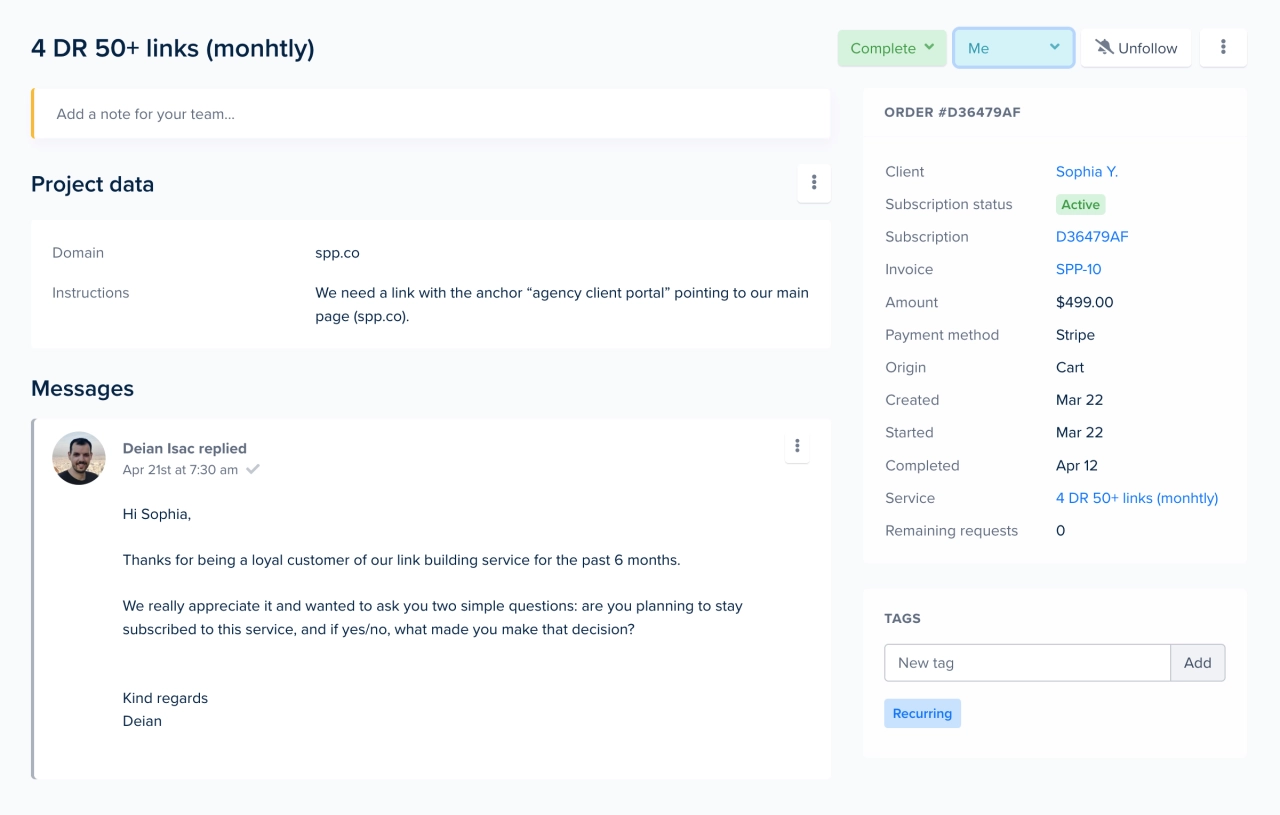
That means that feedback emails should get to the point quickly, don’t ask too many questions, and most importantly, be sent at the right time. You could request feedback from a new customer, sure, but also your biggest ones, or those that are subscribed to your least popular plan.
Keep in mind that your email is one of many in an inbox that doesn’t receive much love. Make your subject line interesting so it catches one’s attention. Personalize it as much as you can. Here’s an example template you can use:
Hi {first_name},
Thanks for being a loyal customer of our {service name} service for the past {number of months} months.
We really appreciate it and wanted to ask you two simple questions: are you planning to stay subscribed to this service, and if yes/no, what made you make that decision?
Diversify services
In a world where most service providers niche down, there is a place for service diversification. Yes, as an expert in a specific niche, you don’t want to tap into the unknown. However, you don’t have to!
Thanks to SPP’s whitelabel program, you can resell the services of other Service Provider Pro users. Imagine you’re a social media management agency that constantly gets asked to write blog posts—after all, all writing is the same! Well, not quite, but with the whitelabel module, you can tap into our network and offer their services. The fulfillment is done by the agency you partner up with, while you can sit back and relax.
Looking to make sure SPP.co is right for you? Get on a call with our customer success team.
Of course, you could start hiring content writers, but be careful when it comes to diversifying your services. If only a few clients show interest, that doesn’t mean you’ve spotted a trend. Also, what if those clients churn? You’ll be left with content writers who have nothing to do. White labeling reduces that risk because the partner agency has to worry about growing their customer base.
Tap into your data
Regardless if you’re using a client portal for agencies, a CRM or other tools—you have a lot of data at your disposal. Use it to your advantage by trying to understand if
you’re making enough money,
you’re attracting the right customers,
which plans are the most popular, and
how pricing changes impact your business.
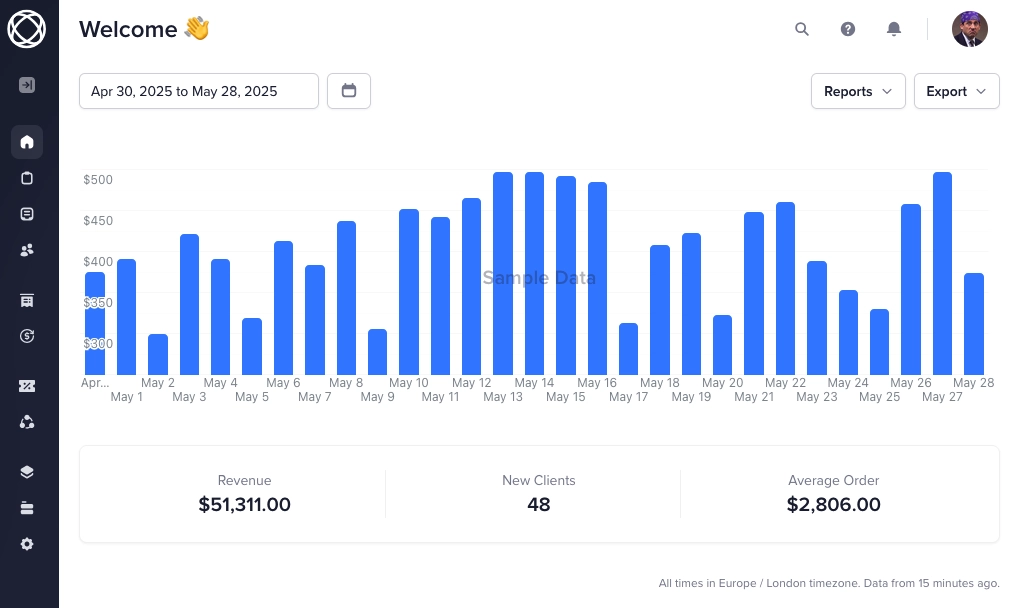
In Service Provider Pro, you can look at a variety of reports to get a better understanding of your subscription business. But you can also use tools such as ProfitWell or Baremetrics, the former being free (unless you need one of the paid tools). With ProfitWell, you not only get information about your recurring revenue (monthly, annual, per user), but also an overview of your cash flow, refunds, different stats about your retention as well as client acquisition and growth.
This makes it easier to make decisions when it comes to hiring new employees, introducing (or removing) services, and when to contact customers in order to upsell them.
Embrace your subscription model
If you want to increase retention and reduce churn, you need to focus all your energy on your business model. Those relying on recurring subscriptions should focus a lot on retention by being proactive—meaning, prevent customers from canceling in any way you can. It’s in your best interest to have many repeat customers who are happy to purchase your services—again and again.
Hopefully, the different retention strategies mentioned above will help you with this important task. But don’t be afraid to try out new strategies. I’ve seen some of our customers who’ve been quite inventive. You don’t have to reinvent the wheel, but sometimes a new coat of paint can do wonders. For instance, brand your loyalty program as a VIP program. Doesn’t that sound way more interesting?
